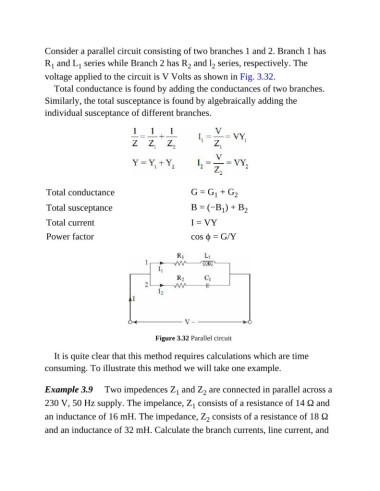Page 332 - Basic Electrical Engineering
P. 332
Consider a parallel circuit consisting of two branches 1 and 2. Branch 1 has
R and L series while Branch 2 has R and l series, respectively. The
2
2
1
1
voltage applied to the circuit is V Volts as shown in Fig. 3.32.
Total conductance is found by adding the conductances of two branches.
Similarly, the total susceptance is found by algebraically adding the
individual susceptance of different branches.
Total conductance G = G + G 2
1
Total susceptance B = (−B ) + B 2
1
Total current I = VY
Power factor cos ϕ = G/Y
Figure 3.32 Parallel circuit
It is quite clear that this method requires calculations which are time
consuming. To illustrate this method we will take one example.
Example 3.9 Two impedences Z and Z are connected in parallel across a
2
1
230 V, 50 Hz supply. The impelance, Z consists of a resistance of 14 Ω and
1
an inductance of 16 mH. The impedance, Z consists of a resistance of 18 Ω
2
and an inductance of 32 mH. Calculate the branch currents, line current, and

